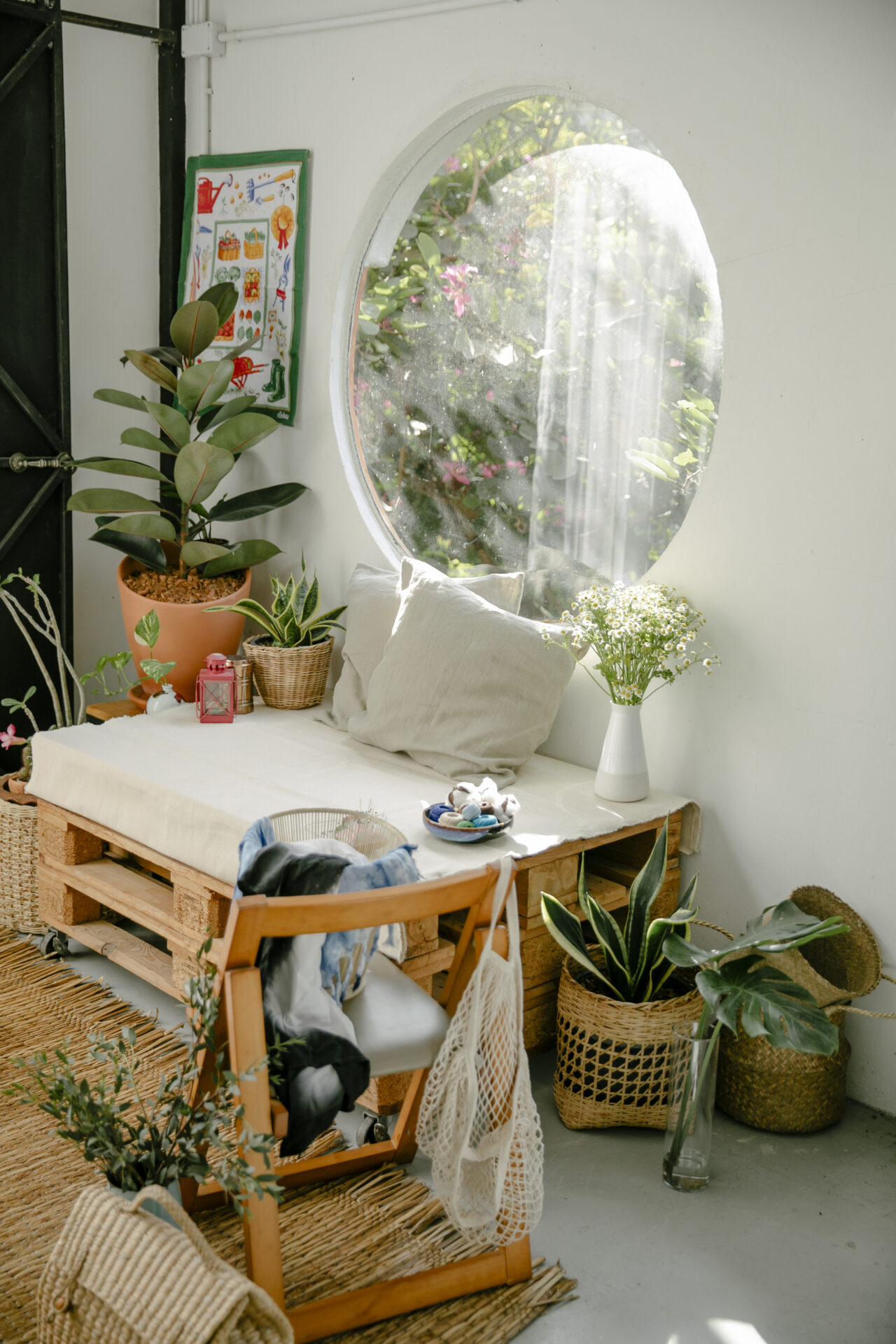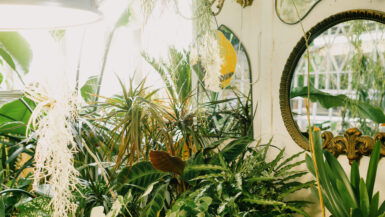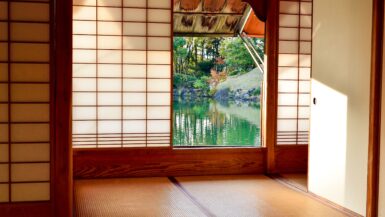Indoor vertical gardening has revolutionized how we grow plants in urban spaces, offering an efficient and aesthetically pleasing solution for those with limited room. As more individuals recognize the benefits of cultivating fresh produce and ornamental plants, the demand for practical and innovative gardening methods has surged.
This step-by-step guide will explore the intricacies of creating your indoor vertical garden, from selecting the right plants to designing the perfect layout and understanding the essential care and maintenance techniques. This comprehensive article will equip you with the knowledge and tools to embark on your vertical gardening journey.
So, whether you are a seasoned gardener or a complete novice, join us as we delve into indoor vertical gardening and discover how to transform your living space into a thriving, green oasis.
Benefits of Indoor Vertical Gardening
Indoor vertical gardening offers a myriad of advantages that go beyond merely saving space. By incorporating this innovative approach into your home, you can reap the rewards of a healthier living environment, increased productivity, and a beautiful, thriving green sanctuary.
In this section, we will explore the numerous benefits of indoor vertical gardening, from improving air quality and mental well-being to conserving resources and promoting sustainability.
Enhanced Air Quality and Reduction of Pollutants
One of the most significant advantages of indoor vertical gardening is its ability to improve air quality. Plants naturally filter out pollutants and release oxygen, thus creating a healthier living environment for you and your family.
An indoor vertical garden can effectively remove harmful toxins such as formaldehyde, benzene, and trichloroethylene, commonly found in household products and furnishings. Incorporating a vertical garden into your living space allows you to breathe easier and enjoy a cleaner, fresher atmosphere.
A Boost to Mental Health and Well-being
The presence of plants in your living space has been proven to impact mental health and overall well-being positively. Studies show that being surrounded by greenery can help reduce stress, anxiety, and depression while enhancing focus and productivity. An indoor vertical garden adds aesthetic appeal to your home and serves as a daily reminder to connect with nature, promoting mindfulness and tranquility in your everyday life.
Conservation of Water and Resources
Indoor vertical gardens are an eco-friendly and resource-efficient solution for urban gardening enthusiasts. Utilizing vertical space allows for the growth of more plants using less water and soil compared to traditional horizontal gardening methods. Adopting the best watering techniques that promote water conservation and efficient nutrient delivery is crucial to ensure your indoor vertical garden thrives.
Increased Growing Potential in Small Spaces
Indoor vertical gardening provides the perfect solution for urban dwellers looking to maximize their limited space. By growing plants vertically, you can use your walls and corners better, turning any area into a lush, green sanctuary. With the proper plant selection and appropriate care, you can grow various crops, including herbs, vegetables, and ornamental plants, right in the comfort of your home.
Promotes Sustainability and Reduces Carbon Footprint
By cultivating your produce, you can significantly reduce your carbon footprint and contribute to a more sustainable future. Indoor vertical gardening allows you to grow fresh, organic fruits and vegetables with minimal environmental impact. Additionally, you can reduce your reliance on commercially grown produce, which often involves long-distance transportation and harmful pesticides.
As you can see, indoor vertical gardening offers many benefits that extend far beyond space-saving solutions. By embracing this innovative approach, you can contribute to a healthier and more sustainable lifestyle while enjoying the beauty and serenity of your green oasis.
Choosing the Right Space for Your Indoor Vertical Garden
The location of your indoor vertical garden is crucial for ensuring its success and longevity. Several factors must be considered, including lighting, ventilation, and available space. In this subsection, we will explore these vital elements and provide valuable tips for selecting the optimal space for your indoor vertical garden.
Lighting Requirements: Finding the Perfect Spot for Optimal Growth
Sunlight is essential for plant growth; proper lighting can make or break your indoor vertical garden. Assess the natural light in your chosen space by observing the area throughout the day. North-facing rooms tend to receive indirect sunlight, making them suitable for shade-loving plants, while south-facing rooms offer ample sunshine for sun-loving species.
Artificial lighting, such as LED grow lights, can supplement natural light and encourage healthy growth.
Ventilation and Air Circulation: Keep it Fresh and Breezy
Proper air circulation is crucial for maintaining a healthy indoor vertical garden, as it helps prevent moisture buildup and the spread of diseases. Choose a well-ventilated area or incorporate a fan to ensure consistent airflow around your plants. Be mindful of proximity to heating or air conditioning vents, as fluctuating temperatures can negatively impact plant growth.
Space Considerations: Make Every Inch Count
When planning your indoor vertical garden, carefully measure the available space to ensure it can accommodate your desired plant selection and garden structure. Consider factors such as ceiling height, wall width, and floor space.
Remember that some vertical garden systems may require additional anchoring, drainage, or irrigation room. Be creative and resourceful in maximizing your space, using corners, shelves, or even mobile planters to optimize your garden layout.
Structural Integrity: Support Your Garden with Confidence
The weight of your indoor vertical garden, including the plants, containers, and growing medium, can add up quickly. Ensure the chosen location can support the weight and stress of your garden structure. If you plan on attaching your vertical garden to a wall, check for studs or use appropriate wall anchors to secure the system safely.
Freestanding vertical gardens may require a sturdy base or additional support to prevent toppling.
Selecting a suitable space for your indoor vertical garden ensures its success. By carefully considering lighting, ventilation, space, and structural integrity, you can create a thriving and beautiful garden that enhances your living environment and brings you joy for years.
Selecting the Best Vertical Gardening System
Choosing the ideal vertical gardening system for your indoor space is essential for creating a flourishing and visually pleasing garden. With many available options, deciding which system best suits your needs and preferences can be overwhelming. This subsection will explore the various vertical gardening systems and provide valuable insight into selecting the perfect fit for your indoor space.
Wall-mounted Systems: Transform Your Walls into Living Art
Wall-mounted systems are an excellent choice for those looking to maximize their available vertical space while adding a natural beauty to their living environment. These systems typically consist of modular panels or containers that can be securely affixed to a wall, creating a stunning, living canvas. When choosing a wall-mounted system, consider weight, installation requirements, and plant care and maintenance ease.
Freestanding Towers: A Versatile and Mobile Solution
Freestanding vertical garden towers offer a flexible and portable option for those who wish to move their garden around or avoid damaging walls. These systems often feature stackable or tiered planters arranged around a central support, providing ample room for plant growth without taking up much floor space. When selecting a freestanding tower, consider its stability, durability, and overall aesthetic appeal.
Vertical Shelving and Ladder Systems: Combine Functionality with Style
Vertical shelving and ladder systems are stylish and practical solutions for those seeking a more open and accessible garden design. These structures consist of shelves or tiers that can house a variety of plant containers, allowing for easy rearrangement and customization. When choosing a vertical shelving or ladder system, ensure that it is sturdy, easy to assemble, and offers ample room for plant growth.
Hydroponic and Aeroponic Systems: Embrace Innovative Growing Techniques
Hydroponic and aeroponic systems offer cutting-edge solutions for those interested in soil-less gardening. These systems accelerate plant growth and yield impressive results. They deliver water and nutrients directly to the roots, eliminating the need for traditional soil and saving valuable resources. When selecting a hydroponic or aeroponic system, consider installation complexity, maintenance requirements, and overall cost.
DIY Options: Unleash Your Creativity with Customized Solutions
For the creative and resourceful gardener, DIY vertical gardening systems offer the opportunity to tailor your garden design to your specific needs and preferences. To create a unique and personalized indoor vertical garden, you can ingeniously repurpose materials such as pallets, gutters, or hanging shoe organizers. When embarking on a DIY project, be prepared to invest time and effort in research, planning, and execution to ensure the success and longevity of your garden.
Selecting the best vertical gardening system is crucial in creating your indoor vertical garden. By carefully considering your available space, personal preferences, and desired plant selection, you can choose a system that will not only meet your gardening needs but also enhance the beauty and functionality of your living space.
Proper Care and Maintenance of Your Vertical Garden
Achieving a thriving and beautiful indoor vertical garden requires consistent care and maintenance. This subsection will delve into the essential aspects of caring for your vertical garden, including watering, fertilizing, pruning, and pest control. By following these guidelines, you can ensure the health and longevity of your garden while enjoying the bountiful rewards of your efforts.
Watering Wisdom: Keep Your Plants Hydrated and Happy
Proper watering is crucial for maintaining a healthy indoor vertical garden. Each plant species has unique watering needs, so it is essential to research and understand the preferences of your chosen plants. Overwatering can lead to root rot and fungal issues, while underwatering may cause wilting and stunted growth.
As a general rule, use a well-draining growing medium and water your plants when the top inch of the soil feels dry to the touch. For hydroponic and aeroponic systems, ensure the water reservoir is consistently filled and the nutrient solution remains balanced.
Feeding Your Vertical Garden: Essential Nutrients for Optimal Growth
Fertilizing your indoor vertical garden is critical for promoting healthy plant growth and maximizing yields. Regularly apply a balanced, all-purpose fertilizer or a specialized blend tailored to your specific plant species. For soil-based systems, incorporate organic matter, such as compost, to provide additional nutrients and improve soil structure.
Hydroponic and aeroponic systems require a specialized nutrient solution for soil-less growing conditions. To maintain optimal plant health, monitor the nutrient levels regularly and adjust as needed.
Pruning and Training: Shape Your Garden for Success
Regular pruning and training are essential for maintaining the aesthetics and functionality of your indoor vertical garden. Pruning encourages bushier growth, increases airflow, and helps prevent the spread of diseases.
To maintain your plants’ desired shape and size, regularly remove dead, damaged, or diseased foliage and trim back overgrown branches. For vining or climbing plants, use trellises or support structures to guide their growth and prevent overcrowding.
Keep Pests at Bay: Protect Your Garden from Unwanted Guests
Pest control is vital to maintaining a healthy indoor vertical garden. Regularly inspect your plants for signs of infestation and promptly address any issues to prevent the spread of pests. Use integrated pest management (IPM) strategies, such as introducing beneficial insects, using organic pesticides, or employing physical barriers, to effectively control pests while minimizing harm to your plants and the environment.
Maintaining a clean and well-ventilated garden space will also help deter pests and diseases from taking hold.
Proper care and maintenance of your indoor vertical garden are critical to its success and longevity. By diligently attending to your plants’ watering, fertilizing, pruning, and pest control needs, you can cultivate a lush and vibrant garden that will enhance your living space and provide you with the immense satisfaction of nurturing your green oasis.
Picking Suitable Plants for Your Indoor Vertical Garden
Selecting the right plants for your indoor vertical garden ensures its success and longevity. Your chosen plants should thrive in your chosen space and enhance your garden’s overall aesthetics and functionality. In this subsection, we will explore the key factors to consider when selecting plants for your indoor vertical garden, including lighting, space, and compatibility with your chosen vertical gardening system.
Lighting Preferences: Matching Plants to Your Indoor Environment
When choosing plants for your indoor vertical garden, it is essential to consider their lighting preferences. Assess the natural and artificial light in your chosen space and select plants that will thrive under these conditions.
For example, choose shade-loving plants for areas with indirect sunlight, such as north-facing rooms, and sun-loving plants for spaces with ample sunshine, such as south-facing rooms. By selecting plants well-suited to your lighting conditions, you can maximize their growth potential and ensure a healthy, vibrant garden.
Size Matters: Consider Growth Habits and Space Requirements
Another critical factor to consider when selecting plants for your indoor vertical garden is their size and growth habits. Choose plants that will not outgrow their containers or overcrowd neighboring plants, ensuring each plant has ample room to grow and flourish.
Consider selecting a mix of trailing, bushy, and upright plants to create visual interest and maximize your vertical space. You can make a harmonious and visually appealing garden design by carefully considering your chosen plants’ size and growth habits.
Compatibility Counts: Pair Plants with Similar Needs
When planning your indoor vertical garden, it is essential to select plants with similar care requirements, such as watering, fertilizing, and temperature preferences. Grouping plants with similar needs together makes it easier to care for your garden and ensures that each plant receives the appropriate attention and resources to thrive.
By carefully considering the compatibility of your chosen plants, you can create a cohesive and thriving garden that is easier to maintain and enjoy.
Edible or Ornamental: Cater to Your Personal Preferences
Your indoor vertical garden should reflect your preferences and needs, so choose plants that bring you joy and satisfaction. If you’re interested in growing your fresh produce, consider incorporating a variety of herbs, leafy greens, and compact fruiting plants into your garden design.
Alternatively, opt for ornamental plants with attractive foliage, textures, or colors if you prefer a more decorative garden. By selecting plants that align with your personal preferences, you can create a garden that is not only visually appealing but also personally fulfilling.
Selecting the right plants for your indoor vertical garden is crucial to creating a successful and enjoyable gardening experience. By carefully considering lighting, space, compatibility, and personal preferences, you can choose plants that will thrive in your chosen environment and contribute to a beautiful and functional garden that will bring you joy and satisfaction for years.







Leave a reply